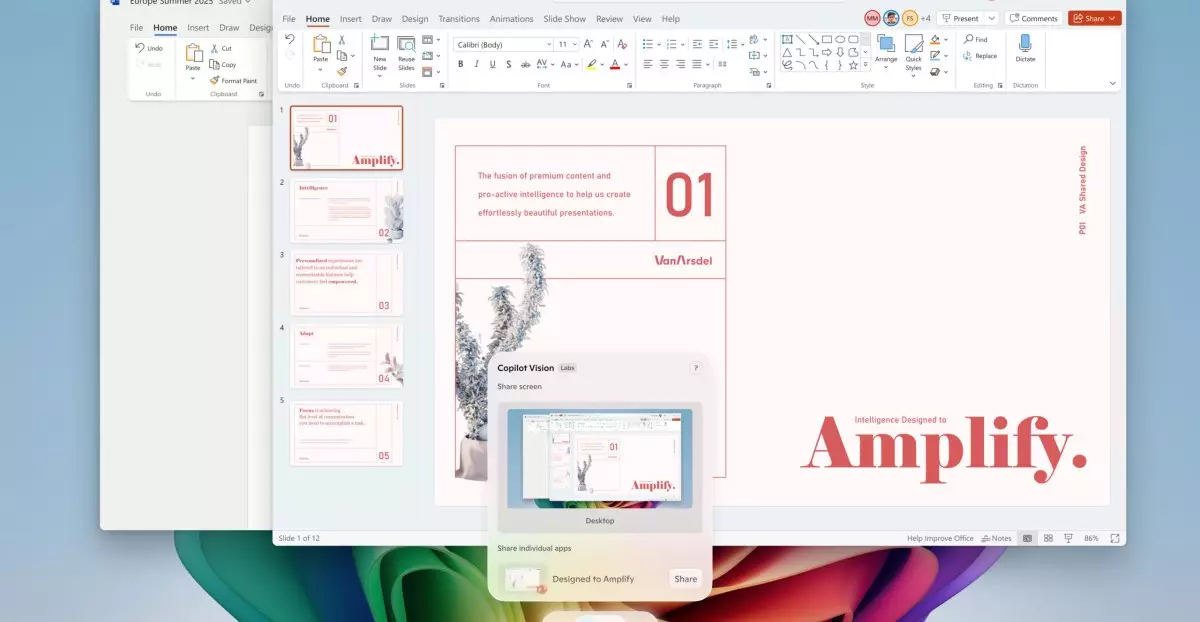Microsoft’s latest suite of Windows 11 features signifies a bold step toward integrating artificial intelligence into everyday computing. At the heart of this transformation is the Copilot Vision, a screen-scanning AI that promises to redefine how users interact with their devices. By enabling the system to analyze and interpret everything displayed on the screen, Microsoft is pushing the boundaries of what personal computers can do, blending human intent with machine intelligence.
This innovation is more than just a superficial upgrade; it symbolizes a fundamental shift in the user experience. Instead of manually navigating through settings, troubleshooting, or content creation, users are now empowered with tools that understand natural language and contextual cues. For example, asking the AI to enhance photo lighting or summarize a lengthy document becomes seamless. The intuitive nature of these features suggests that AI is edging toward becoming an indispensable extension of our cognitive processes—an assistant that learns, adapts, and simplifies.
However, while the potential benefits are compelling, this evolution raises critical questions about reliance, privacy, and user agency. The AI’s ability to scan and analyze everything on the screen could inadvertently lead to overdependence, where users become passive recipients rather than active controllers of their digital environment. Furthermore, if the AI processes sensitive information constantly, it invites skepticism about data security and privacy—areas where trust remains fragile and demands rigorous safeguards.
Exclusivity and Edge Cases: The Divide Between Power and Preference
Not all Windows 11 users will experience these features equally. Microsoft’s decision to differentiate capabilities based on hardware, such as Snapdragon-powered Copilot Plus PCs, introduces an element of exclusivity that could widen the gap between casual users and power users. Advanced AI tools like the object select feature in Paint or the AI-powered lighting in Photos offer significant creative advantages, but their availability is limited to specific devices and plans.
While this stratification might incentivize hardware upgrades, it also risks fragmenting the user base. Users without access to these premium features might feel left behind as AI-driven productivity and creative tools become the new standard. This disparity challenges Microsoft’s claim of democratizing AI, exposing a reality where access to cutting-edge features is often tethered to hardware investment rather than user need or preference.
Moreover, the practical implications of these AI enhancements must be scrutinized. How reliable are the “perfect screenshots” or the natural language searches? Will they deliver consistent value across different use cases, or will they sometimes generate frustration and inaccuracies? The current iteration appears promising but still imperfect—a reminder that AI integration in critical workflows must be approached cautiously.
Balancing Innovation with User Autonomy
Microsoft’s push into AI-augmented computing reveals an optimistic vision: a future where technology anticipates and simplifies our actions, freeing us to focus on more meaningful creative or analytical pursuits. Yet, this optimism needs to be tempered with realism about potential pitfalls. The more AI takes over tasks like scheduling, content editing, or even decision-making, the greater the risk of eroding user autonomy.
The “Click to Do” feature exemplifies this dilemma. While it streamlines operations and reduces cognitive load, it may also subtly diminish users’ understanding of the processes involved, fostering a dependency that could hamper skill development. Additionally, AI tools like the sticker generator or object select in Paint might accelerate creative workflows, but they might also suppress individual craftsmanship if misused or overused.
Furthermore, the surveillance-like aspect of continuous screen analysis could lead to a paradoxical situation: in striving for convenience, users might sacrifice their sense of control or privacy. Trusting an AI with such invasive capabilities requires a confidence that their data is secure and that the AI’s suggestions are accurate and unbiased—a demand that seems ambitious given the current state of AI technology.
In essence, Microsoft’s AI initiatives represent a double-edged sword. While they promise heightened productivity, creativity, and ease of use, they also pose serious questions about dependence, privacy, and the erosion of human skill. As this technology rolls out more broadly, users must critically evaluate whether these enhancements serve their interests or subtly redefine their relationship with technology’s increasing autonomy.

